So, that's it then. TADS 2021 has drawn to a close and although (for obvious reasons) it wasn't a full year of walks we did at least manage five compared to just four last year. Hopefully 2022 will see, as in 2016, 2017, 2018, and 2019, a full program, but, all things considered, I think TADS 2021 went pretty bloody well.
In June (after the longest break in TADS history) a jubilant and eager group decamped to the south coast for a jaunt from Rye to Camber Sands and back in July a small but select group skirted the perimeter of Canvey Island before watching England thwack Ukraine in the Euros in a pub in Benfleet, in September an even smaller, an even more select, group traipsed from Bognor Regis to Ford near Arundel, and, best of all, back in August an impressive fifteen TADS descended upon Llangollen for a weekend that felt as much of a holiday as walking weekend.
Llangollen, Camber Sands, Canvey Island, and Arundel were all full of laughter and joy and, I am pleased to report, yesterday's traditional capital closer was no different. I'd been so eagerly awaiting it I'd gone to bed before 10pm the night before and was up before 5am and out of the house not long after 8.
I took the 122 bus from Brockley Rise to Woolwich (there was a frail looking woman a few seats in front of me, maskless, who had a repetitive and rasping cough - that saw a few people change seats as well as a few masks come out) and was there not long after 9.
I hadn't arranged to meet anyone until 10am so I had a wander round Woolwich on a dry, autumnal November morning and then retired to the Arsenal Gate Cafe (from where the Capital Ring took off back in January last year - in the before times) to have a cuppa and wait for the others to arrive.
Adam was next (also pretty early) and then Pam. They had nice big veggie breakfasts but reading over my blog from last year I was reminded that they did decent cheese on toast so I had that with a can of Coke. I didn't know they were going to cut it up into little bite size pieces for me like a child's meal. I felt like Adam and Pam were my parents as they tucked into hearty tomatoes and hash browns.
It was still tasty though. We picked Mo up outside the station and we headed off on the walk. First, again, retracing those Capital Ring steps (and discovering the revelation that Pam has never ever been down a water slide) we headed down No 1 Street past various reminders of Woolwich's military history.
On reaching the Thames we tried, and failed, to squeeze into Antony Gormley sculptures before taking the lift down beneath the river and heading through the Woolwich Foot Tunnel. Built in 1912 and designed by Sir Maurice Fitzmaurice (who'd worked with Benjamin Booker on the Forth Bridge and the Aswan Dam in Egypt).
The knight Fitzmaurice also built the Blackwall Tunnel, Rotherhithe Tunnel, and Vauxhall Bridge. He is a man who knows his way across a body of water and, here, the Thames is a pretty expansive one. The Grade II listed tunnel is 504m long and this means that despite NO CYCLING being the chief rule (see above) it is one that appears to be as widely adhered to as TfL's insistence you wear a face covering on their vehicles.
North of the Thames, it's a different picture. Boarded up pubs, rubbish strewn streets, and a generally forlorn air permeates the area known as North Woolwich. We passed along a few low rise residential streets with the looming Tate & Lyle sugar refinery a constant shadow and also passed the King Charles V DLR station which opened in 2005 and replaced the old North Woolwich station. The DLR (whose route, to a degree, we'd follow for a while and for whom the walk was so amusingly named) was itself opened in 1987 and now has one hundred and forty-nine trains serving forty-five stations.
The King George V dock (which remained resolutely hidden by a large wall for most of this section) is the last of the three royal docks to be built and the smallest of them. In front of it stands London City Airport and soon we, too, stood in front of that airport. It's a fantastically convenient airport (not that I've flown for over two years now) and remarkably small. Like the DLR, it was 'born' in 1987.
The snaking overhead tracks of the DLR, and its silent running cars, lend a futuristic, or retrofuturist, feel to the area and an imposing female statue in a roundabout makes you feel as if you are almost anywhere but London. Connaught Road cuts between the two larger royal docks and to pass through underneath it you have to duck so as not to bang your head on the concrete.
The largest, Royal Victoria Dock, was to our west and was built in 1855. Designed and engineered by Devon's George Parker Bidder, it witnessed a famous 1988 performance by Jean-Michel Jarre. We followed along the northern side of it in front of the vast ExCel centre. The ExCel has, of course - quite famously, recently served as a Nightingale hospital during the pandemic and as well as lots of no doubt slightly dull trade fairs was a venue for the 2012 Olympics.
Games played here included boxing, fencing, judo, taekwondo, table tennis, weightlifting, and wrestling. It's an impressive and evocative body of water, the dock itself. With planes taking off nearby and old deserted looking mill buildings flanking its southern perimeter it afforded us several photo opportunities and it was also where we would meet two more of our walkers:- Kathy and, for the first time on a TADS walk (though he has come on one of my LbF walks) Dave F.
They were hanging around the enormous Sunborn Yacht. Now there were six of us and we opted to take the steps rather than the lift (unlike in the foot tunnel) on to the Royal Victoria Dock Footbridge. The footbridge was built in 1998 by Lifschutz Davidson Sandilands (who have also been responsible for the refurbishment of the Oxo Tower) and makes for both an impressive view and an impressive viewing platform.
Kathy's not a fan of bridges, heights, or wind so, for her, crossing it was a perfect storm of fear and she looked most relieved to be back on terra firma. The rest of us enjoyed the view and took time out, specifically, to admire many of the derricks that lined the banks of the dock. They reminded me of some of the architecture we saw in Bristol's Floating Harbour on a TADS two dayer back in the summer of 2019.
The Emirates Airline (yet another one of Boris Johnson's vanity policies - imagine if the pandemic hadn't drained the public coffers just how many of these gewgaws would scar the face of the country by now) took its meagre toll of passengers through the sky between the O2 and the hugely vital tourist destination of a careworn curve in the Bow Creek.
This otherwise uninspiring roadside section was definitely livened up by both the profligate cable car service and the aforesaid creek. It's the final part of the Lea river which has, by the time it reaches the Thames here, come forty-two miles from Leagrave near Luton. We've walked the Lea before so you can read all about it, and the Trinity Buoy Wharf, its lighthouse, and Jem Finer's one thousand year long piece of music, here.
The views across to the O2/Dome were impressive and everyone loves that thing where houses, or blocks of flats, still have that stencilled industrial writing on their sides surely? SAMUDA BROS LIMITED - SHIP BUILDING & ENGINEERING was a fine example of that and far from the only one we saw on yesterday's amble.
West of the Lea there were more roundabouts and roads to navigate (and a bridge across the DLR track at East India) and a brief perusal of Naval Row before we reached Poplar itself. Named for the exceptionally large black poplar trees that once flourished here, Poplar earned itself a place on the map when, in 1654, the East India Company ceded land here for a chapel.
First to catch our eyes was the Brutalist residential estate of Robin Hood Gardens. Built in the late sixties/early seventies by the radical yet controversial architectural team of Alison and Peter Smithson, they're a reaction to Le Corbusier's Unite d'Habitacion in Marseille. Two blocks - one ten storeys high, another of seven, Robin Hood Gardens is in the process of being demolished - or 'redeveloped' and this has caused much dispute and seen V&A Historic England step in to salvage some of the buildings.
An act which caused yet further arguments. A less disputatious destination in Poplar, and one we all agreed was quite delightful, was the Pensioner (or Chelsea Pensioner) pub. Nice music, board games, a pub cat, a very friendly barman, and a hazy pint of Siren in good company, it'd be an easy place to make a 'two pint mistake'.
In fact it'd be an easy place to spend, or waste, an afternoon. Either in the company of friends, one's partner and a game of Scrabble, or alone with a newspaper and a crossword. Maybe another day. The TADS still had plenty of walking in them.
Further into Poplar stands St Matthias Old Church. One of very few churches built in Britain (and the only one built in London) during the 1649-1660 Commonwealth of Oliver Cromwell. The story is that a corrupt jeweller, Hugh Greete, had been sent back in disgrace from India having been found guilty of stealing precious stones. When he died in prison in 1619, he directed that a school or hospital be built from his estate. Residents demanded a chapel too and heated debate began about the architectural style of that church.
William Laud, then Archbishop of Canterbury, was heavily involved in these discussions but died before the church could be built so it's not known if his ideas were taken on board. The church they ended up with has a Dutch flavour to its architecture and, for many years, mariners would pray here before departing on then dangerous voyages on the high seas.
Before leaving Poplar (a strangely homely place, not least as it now resides in the shadow of the glass and steel skyscrapers of Canary Wharf) I laid down a few last Poplar facts to the TADS. Alas, we were not able to see across to Erno Goldfinger's 1963 Balfron Tower (a precursor to the Trellick out west) which would have been another controversial building but perhaps much needed as Poplar suffered heavily during the Blitz of World War II.
Seven hundred and seventy Poplar residents are said to have died. Some famous Poplarites who did survive include Harry Redknapp (born here), Alfred Hitchock (lived here as a child), and Angela Lansbury who, at ninety-six years old, is still holding out. They make 'em tough in Poplar.
At the end of Poplar High Street we cut down Ming Lane and perhaps its name gives a clue to the fact that we were heading to Limehouse and that Limehouse is the site of London's first ever Chinatown. Arthur Conan Doyle, unafraid of a racial stereotyping, had Sherlock Holmes visit the area in search of opium.
Limehouse Causeway is where we said goodbye to Mo (she's not been feeling 100% but I was very glad she'd joined at all and hope to see her on future TADS treks) and is believed to be the site of that Chinatown but World War II bombing and subsequent redevelopment has left little trace of the area's former glories. That said, it's a pleasant stretch. Tranquil, fairly empty roads with a pleasant park (Ropemakers Field) on one side and old converted wharves of yellow London stock bricks and painted in shades not too far from British racing green.
Limehouse Causeway casually becomes Narrow Street (which isn't that narrow at all - but did used to be) and this is the site of the former river wall. In Elizabethan times and during the reign of James I, Limehouse became a centre of world trade. Later, Whistler would paint here and The Grapes pub would appear, slightly disguised, in the opening chapter of Charles Dickens' Our Mutual Friend. Oscar Wilde and Peter Ackroyd have also written about the area and the painter Francis Bacon once called it home.
A pub has stood on the site of The Grapes since 1583 and this current building dates back to the 1720s. It's now owned by Sir Ian McKellen (and people often call it Gandalf's pub) and though we stopped here in November 2018 during my Hawksmoor themed LbF walk - flags could be seen in the distance blowing on the steeple of his St Anne's - we didn't realy have time to this time.
There are a lot of nice pubs along this stretch and it's simply not possible to stop at them all AND complete a walk. Near the entrance to the Limehouse Basin we cut past the pleasant smelling Narrow restaurant (one of Gordon Ramsay's) and on to the riverside. The Thames was at high tide and was pretty hectic. With the dramatic skies overhead and the views across to Rotherhithe it made for a pleasing aspect.
We crossed into Shadwell and along Wapping Wall, past a bustling Saturday market and hordes of thirsty shoppers piling into The Prospect of Whitby. Wapping Wall soon becomes Wapping High Street and not long after the tube station we found ourselves outside the Captain Kidd pub. Shep has been out of action since the end of August with a 'fucked ankle' and had not been able to attend a TADS walk since July's visit to Canvey Island.
He's still not fully match fit so was just joining us for the final four or so miles, easing himself back in. He'd been quite content to nurse a pint in the Captain Kidd until we arrived and it was good to have him back. He's probably frustrated that, unlike Pam, Adam, and myself, he's not been able to fill his full card out this year.
Arriving at the Captain Kidd I took a pint of their pure brewed organic lager (it's a Sam Smith's pub so they have their own protocol when it comes to drinks available) and we found a large booth and wiled away a good forty-five minutes watching Uber boats flow up and down the Thames and summarily dismissing the entire career of eighties crooner Jim Diamond and his former outfit PhD.
Back on Wapping Wall we saw the below hideous vehicle, a VELOCIRAPTOR - I ask you, parked outside a gym. Adam observed that its owner was most definitely on steroids and I couldn't help adding that even the car seemed to be steroids. It's not a vehicle you need to drive around London and it is one that I felt ashamed to even walk past. I won't say anything about the size of the owner's penis but THAT car and THOSE steroids. You decide.
I love the walkways between the former wharves, presumably flat conversions now, that you see here and, now, in the twilight, they looked as impressive as ever. As did St Katharine Docks (whose pubs would have made yet more good pit stops) and Tower Bridge which, once we'd passed under the Tower hotel, we'd soon be crossing.
I'd not planned on much spiel for this section because this is central London and its history is both well known and has been/will be covered in other walks. I had, however, planned to lead the walkers along the north bank but Kathy said she'd prefer to walk on the south (it IS more interesting) and, in recent years, I have become more flexible and adaptable than the younger me so I happily obliged.
Of course, on a clear night, London looked fantastic and reminded me why it is a city I love. That love must always be unconditional as London is not possible of returning it. It must, also, be a selfless love as London has many millions of lovers (and a probable equal number of haters). That's okay. London is for sharing and that, in many ways, is something it has in common with these walks.
Tower Bridge, City Hall, St Paul's Cathedral, the remains of Winchester Palace, the Shard, and Hay's Galleria all looked beautiful to me but there was one thing that was irking the male members of our group - as well as the members of the males. After two pit stops, we were all desperate for a piss.
After Adam, Shep, and Dave F had relieved themselves in the toilets of the busy Anchor pub in Bankside we came away from the river on Blackfriars Bridge Road and cut down Stamford Street for one last pre-prandial drink in The Fountain & Ink. A modern but pleasant setting which was only slightly marred by someone letting off very loud party poppers to mark a birthday celebrated by a drunken party dressed in onesies.
Each to their own. We continued along to the IMAX and opposite Waterloo station found ourselves in what used to be the Thames Tandoori and is now called the Thames Restaurant for some reason (possibly because there's another Thames Tandoori) in Battersea. It's a place where, as Adam never tires of reminding me, I once made a drunken exhibition of myself by singing Abba songs at the top of my voice and not eating so much as a grain of rice when my meal came.
I was very, embarrassingly, drunk and very few people thanked me for the music. Even if I was just outisde Waterloo. Luckily there was no need for an SOS when Shep enquired if they served Bangla beer. They did. He nearly ordered six, overlooking that Kathy doesn't like beer and Dave F is teetotal. Then, Fernando, he struck lucky again when he asked if they'd make him a paneer shashlik and they said yes. I took a veg jalfrezi and, Mamma Mia, it was spicy. Too spicy to eat much of but at least the nan and pulao rice was good and Pam shared some of her delicious kofta with me. When she asked if I wanted some I could only reply "I Do I Do I Do I Do I Do".
That's enough Abba songs (for now)! Adam, Kathy, and Dave F said goodbye and me, Pam, and Shep went for another couple of drinks in The Hole in the Wall (it is our end of year party after all) where they played various northern soul tunes by people with the surname of Wilson and then, that was it, TADS was done for 2021 and it'd been good as well as, at times, emotional. Next year the aim is to start, and finish, all nine walks but, more than that, to continue to enjoy the walks and the friendships formed on them and, who knows, maybe bring some new faces in.
Thanks to Adam, Pam (and for the photos - as ever), Mo, Dave F, Kathy, and Shep for joining me yesterday and thanks, also, to everyone who attended a TADS walk in 2021. On top of those already mentioned that's Teresa, Rachael, Tony, Michelle K, Chris, Michelle B, Darren, Cheryl, Tommy, Neil W, Tina, Neil B, Belinda, Catherine, and, Justine as well as, and how could I possibly leave these two characters out, Betsi and Luca.
The 2022 program is pretty much completed and will be with those of you who are interested soon. But, in the meantime and as a taster for next year, March 2022 will see Tadley God Help Us. A walk in and around Tadley which, to my mind, will be like one of the episodes of Dr Who in which the timelord travels back to his home planet of Gallifrey. What horrors lurk within we can only imagine - but with the sheer loveliness of the ever expanding TADS family, we shall face them together. With humour, awe, curiosity, and, if we have anything to do with it, lime pickle, paneer shashlik, and Bangla.



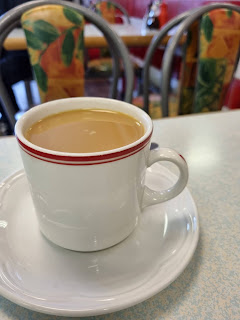










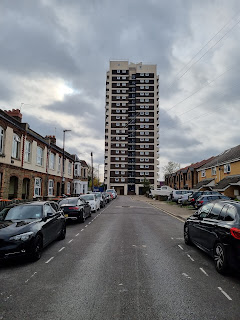











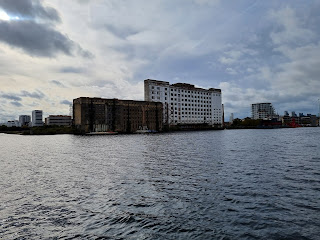




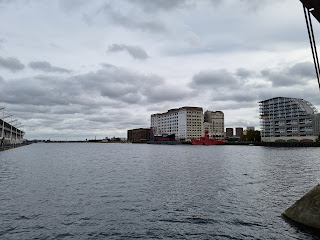






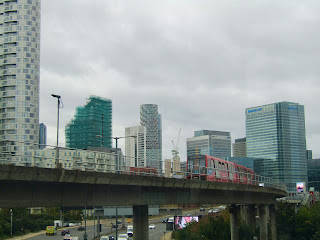



























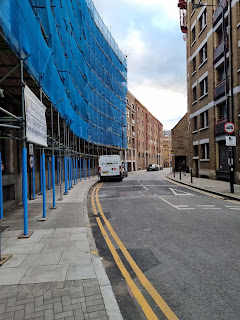




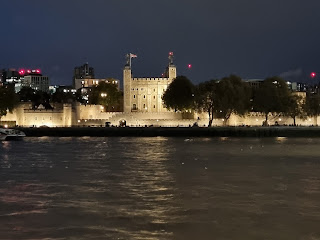







No comments:
Post a Comment